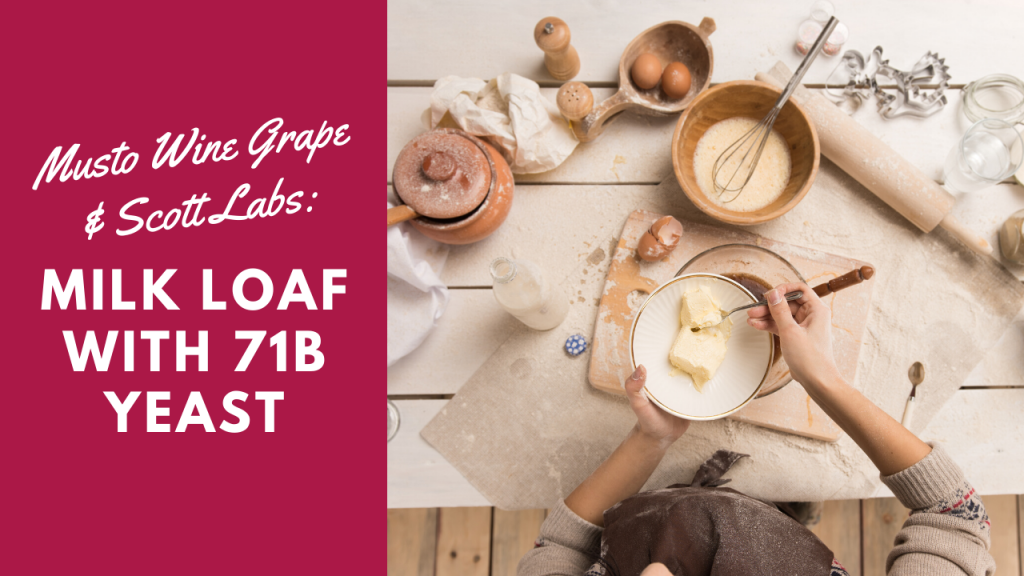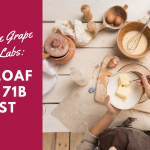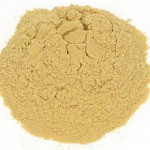Milk Loaf Recipe Using 71B Yeast

Have you run out of ideas for what to keep yourself busy with during quarantine? We’ve decided to experiment and the results were delicious. Using 71B yeast and Scott Lab’s recipe for milk loaf, we put our baking skills to the test and had a whole bunch of fun doing it!
Prep time runs just about two and a half hours, and bake time is about 25 minutes so this will surely keep you busy!
Here’s what you’ll need (for a yield of 2 loaves. If you’d like more increase ingredients as needed):
- 4 cups of bread flour
- 2 teaspoons of salt
- 1 tablespoon of sugar
- 2 sachets (9 grams) of Lalvin 71B Yeast (Don’t have this on hand? No worries! We have it in stock. Give us a call/visit and we’ll get you what you need!)
- 2 tablespoons of butter
- 1 cup warm whole milk
- 1 cup tap water
Here’s what you’ve got to do:
- Mix all dry ingredients together in a bowl. Then, add butter, milk and water. Mix everything together with a spatula.
- Once the wet ingredients have been absorbed, remove dough from bowl and transfer to a counter or workspace.
- Extensively knead the dough by stretching and folding it repeatedly. Once the dough is smooth and slightly shiny, divide it into two pieces. Cover each with plastic and let rise for 40 minutes.
- Flatten each piece of dough and roll into the shape of a football. Let the dough rise again for another 40 minutes.
- Place the dough into a bread pan (about 6”-7” long, 3.5” deep) and cover with plastic and allow to rise for another 60 minutes.
- Bake in a pre-heated oven at 420 degrees F for approximately 25 minutes.
- Let cool and enjoy!
Show us your finished loaves on Instagram and Facebook by commenting or tagging us @mustowinegrapeco and using the hashtag #mustocrushcrew
The Winemaker’s Think Tank: Vol 6 – Do I Add Yeast to My Wine?
What’s the Winemaker’s Think Tank?
Every Thursday we will post about a few frequently asked questions that our winemaker has answered. If you have a winemaking question you would like to have answered, please email us at support@juicegrape.com and we will try to get into next week’s post. Cheers! 🙂
Do I Add Yeast to My Wine?
Some winemakers prefer what is called a “natural method” of fermentation, by allowing the yeast that live on the grape skins to ferment the must into wine. While these yeast can start the process of fermentation, they generally have too low of a population and alcohol tolerance to successfully finish the fermentation process. The most successful fermentations are conducted with lab cultured yeast cells. This is not to say that this method isn’t natural as well. Scientists travel to famous wine growing regions to obtain samples of the natural yeast flora that exist in those environments. They take these samples back to the lab and culture them, breeding select and healthy populations that can be packed and sold to winemakers all over the world. These selected yeast strains have a higher alcohol tolerance and have had the benefit of many trials and research conducted on their behalf to see exactly how they affect a wine. By using these strains you will not only have a more successful fermentation, but also more predictable results rather than the unpredictable results of the wild flora “natural yeast” that live on the skins. Through their research, scientists have found that certain yeasts promote certain attributes of the wine such as color security, fruit characters, spice flavors, and acid reduction. A vintner may select one of these commercially bred strains to get the desired effect they would like in their end product.
We hope this information helps with your winemaking. If you have any follow up questions or winemaking questions in general, please email us at support@juicegrape.com.









Recent Comments